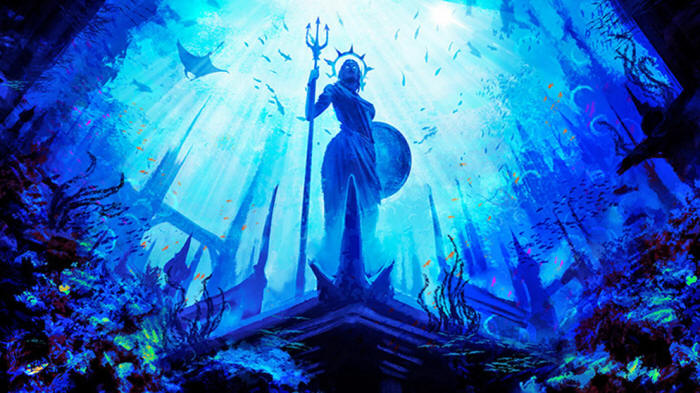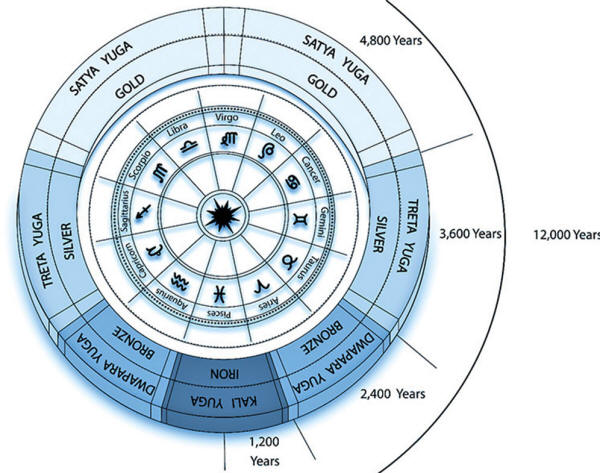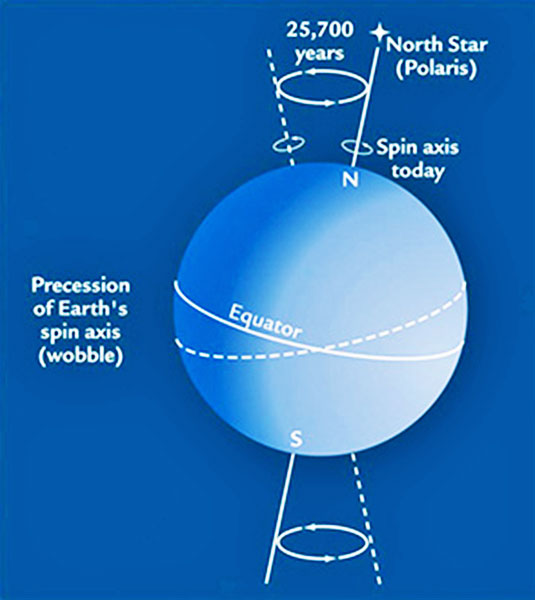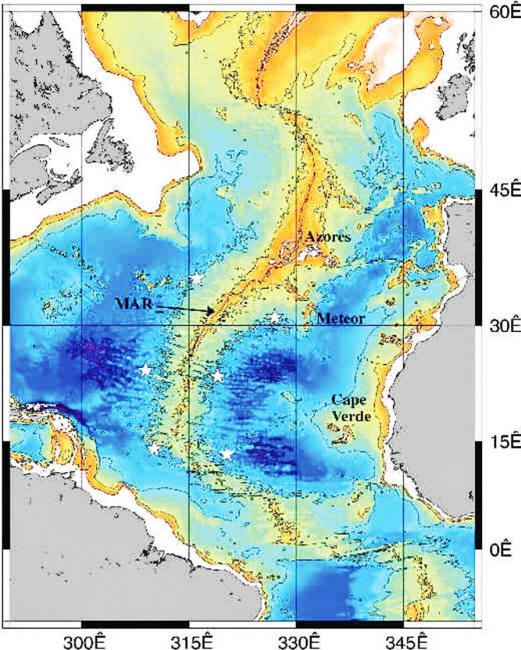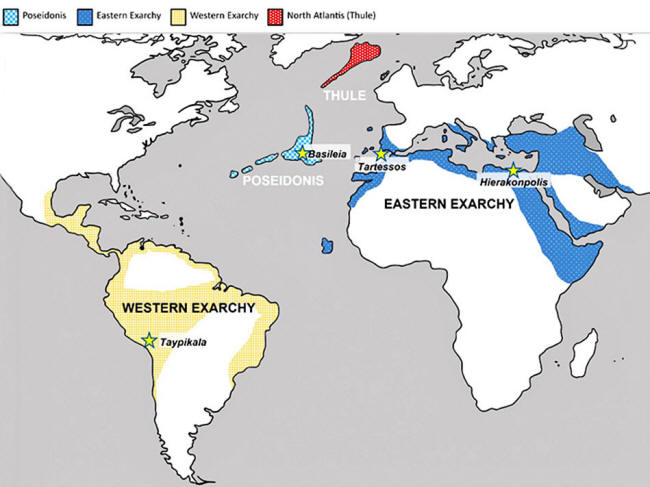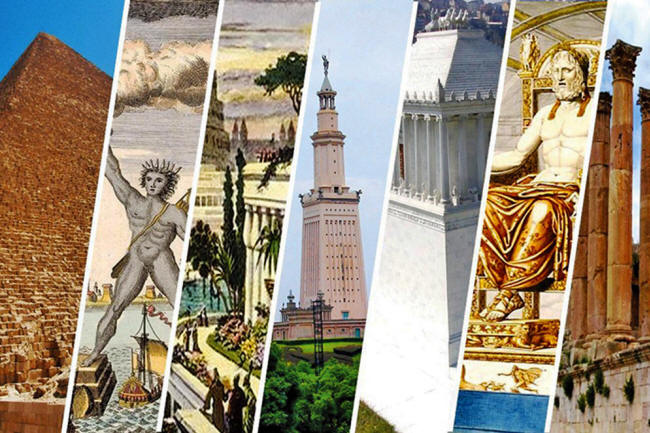|
Vol. 16 No 2 (April 2022)
from
NewDawnMagazine Website
Most people will be familiar with Plato's story of Atlantis.
Written in the 4th Century BCE, it is the wonderful account of a mighty and splendid empire whose island homeland sunk beneath the waves of the Atlantic Ocean 11,600 years ago.
It is truly one of the foundational myths of
western civilization and one that does not cease to fascinate and
prompt questions about the reality and location of the fabled lost
continent.
At its core, it is the story of the fall of a primeval, golden and divine humanity into the depths of materialism.
The metaphysical idea of the "Fall" of man
from an original divine state is projected against the idea of
cyclical time and the myth of a lost Golden Age.
according to metaphysical cosmologies.
A primeval Golden Age gave way to,
A similar worldview probably inspired the system
of the Hindu Yugas and the Mesoamerican Legend
of the Suns, according to which the world has already
undergone four previous cycles of creation or Suns.
It is to these ancient worldviews that Plato conforms himself when he describes the fall of Atlantis as the result of the,
According to Esoteric Tradition, this is the fate of every civilization...
However, there is hope because the end of a cycle invariably marks the beginning of a new cycle. This whole system can also be described by the idea of cosmic seasons in which the Golden Age, Silver Age, Bronze Age and Iron Age follow each other in cyclical repetition...
One only needs to know the starting point of the
present cycle to draw a complete chronology and predict the
beginning of a new Golden Age.
The critical number is 25,920 years,
a duration all but identical to the fabled period of the revolution
of the zodiac, known as the
Precession of the Equinoxes.
Precession of the Equinoxes
Yet it was paramount to ancient cosmologies and
worldviews, as shown by the great interest that nearly every ancient
civilization on the planet placed on the movements of the sky - an
interest certainly going beyond the basic needs of planting and
agriculture.
In the much shorter Christian and biblical chronology, the totality of human experience was effectively limited to the span of the present Iron Age or Kali Yuga.
According to Puranic sources, this began in the year 3102 BCE, leaving no space for previous cycles of creation, least for the idea of a lost world ruled by the gods.
It was based on the authority of the Bible that the Archbishop of Ireland, James Ussher, famously stated in 1650 that,
Thousands of years before Ussher, the Brahmins of India had realized time computations covering the enormous period of 4.32 billion years, while the Chaldean priests could boast of keeping accurate astronomical observations dating back 720,000 years.
Ancient Egyptian records similarly spoke of primeval dynasties of gods and demigods ruling for tens of thousands of years before the beginning of recorded history.
Despite all their internal inconsistencies, gaps in information and incredibly long durations of time, these documents - some of which date back almost to the beginning of modern recorded history in ancient Mesopotamia and Sumer - appear to be in substantial agreement when it comes to portraying a sequence of world ages related to astronomical cycles and the consecutive rule of,
This makes it possible to reconstruct a tentative
picture of the origins of the present cycle and the succession of
different world ages through the last 432,000 years.
In order of time, the last of these cataclysms would have occurred about thirteen thousand years ago, in 10,961 BCE, following an even earlier cataclysm in 35,335 BCE - the two being separated by almost precisely an entire precessional cycle.
While the date of 10,961 BCE may be fixed
astronomically, over half a dozen ancient chronologies point to at
least one major cataclysm between 11,500 and 9,200 BCE.
The memory of the cataclysm was preserved in hundreds of myths worldwide that describe a fiery conflagration followed by a Great Flood and a sudden cooling of the Earth's climate.
This cataclysm may have been responsible for
destroying an advanced
Ice Age society whose survivors
would later spread their civilization and culture throughout the
world.
Bathymetric chart of the Mid-Atlantic Ridge (Image courtesy of NOAA - PMEL Acoustic Program)
Drained of the ocean's waters, the Mid-Atlantic
Ridge would appear as a continuous mountain range stretching nearly
from Pole to Pole, extending for a length comparable to that of the
combined Andes and Rocky Mountains and with heights similar to the
Himalayas.
Evidence collected from the Atlantic seafloor reveals the presence of extinct riverbeds continuing underwater for over 300 kilometers off the coast of Sao Miguel Island in the Azores, at a time when this portion of the Atlantic seafloor was still dry land.
This evidence alone suggests the cataclysmic sinking of a large landmass measuring at least 450 miles across from East to West and 300 miles from North to South, by at least 3,300 meters in the recent geological past.
The rising and subsidence of the Mid-Atlantic Ridge over tens of thousands of years may also explain the cycles of glaciation and deglaciation in the northern hemisphere, as well as the abrupt ending of the Younger Dryas in about 9,600 BCE.
According to Zhirov and other scientists, the sinking of the Mid-Atlantic Ridge, an event possibly triggered by a cometary impact, effectively ended the last Ice Age by allowing the warm Gulf Current to reach the coasts of western and northern Europe.
Rather, the subsidence of the Mid-Atlantic Ridge
spanned hundreds of thousands of years, alternating long periods of
gradual subsidence with truly cataclysmic episodes of sinking by
hundreds or even thousands of meters.
Evidence shows that Atlantean civilization did, in fact, survive the cometary impacts at the beginning of the Younger Dryas.
During what I call the Neo-Atlantean period
between 10,961 and 9,600 BCE, Atlantean missionaries visited
virtually every corner of the world in an attempt to re-establish
pre-cataclysmic civilization.
From these two primary centers and their various colonial outposts, a colossal building program was undertaken, aimed at no less than,
This is the essence of many mythical accounts describing the arrival in various parts of the planet of seemingly divine beings, possessing a civilization and culture far in advance of the local indigenous populations.
and main centers of culture
of the Neo-Atlantean
period.
These semi-divine beings were responsible for the rise of the first Egyptian civilization of the prehistoric period and may have been the original builders of the Great Pyramid and many other colossal megalithic structures of unknown date whose ruins are found throughout Egypt and the Middle East.
Very similar accounts can be gathered throughout
Mexico, Central and South America to explain the origin of sacred
sites and other mysterious structures.
The causes of the collapse are unclear.
In many cases, it is as if the builders simply
dropped their tools and left, leaving behind only the shells of
their unfinished structures, like a great Tower of Babel.
The consequence of this rise in global sea levels would have been particularly severe for any coastal maritime civilization, submerging its major cities and trade centers under rising waters within the span of just a few generations.
But it was the disintegration and fragmentation
of Neo-Atlantean civilization that triggered one of the most
remarkable stages of accelerated cultural and technological
evolution in the whole of human history.
At this time, we witness the sudden emergence of agriculture and sophisticated lithic technology in places like Göbekli Tepe, Jericho and Çatal Höyük, as well as in the highlands of Mexico, Bolivia and Peru.
referred to their ancestors as the Pelasgians. Researcher Marco M. Vigato suggests
they
formed the Atlantean diaspora.
These peoples were the originators of what has since become known as the Atlantic megalithic culture, through at least three different waves of migration in approximately,
These post-Atlantean "Sea Peoples," or Pelasgians, as they would be known to the classical authors, penetrated as far as the western and eastern Mediterranean, where they remained a powerful force until at least the second millennium BCE, leaving evidence of their distinctive megalithic architecture over a very large area extending from the Orkney Islands in the north to western France, southern Spain, Italy and Greece in the south and east.
The last of the "Sea Peoples" invasions in the 12th century BCE became memorialized in contemporaneous Egyptian records from the Temple of Medinet Habu.
It is difficult to speak of fortuitous
coincidences when, throughout the millennia and on entirely separate
continents, one finds the same images and symbols used repeatedly to
convey the same esoteric truths and designate the same abstractions.
The technological know-how to build the Seven Wonders of the Ancient World may have derived from Atlantis, transmitted by the survivors of the lost continent before it met its end.
It must have thus existed at some point as a
preconceived plan, directed by powerful masterminds whose only
purpose seems to have been the unadulterated transmission of
knowledge through the ages that separate us from the fall of the
last Atlantean Empire.
This project calls for no less than the
resurrection of the lost world of the gods, which alone will bring
forth a new Golden Age for Mankind...
|


